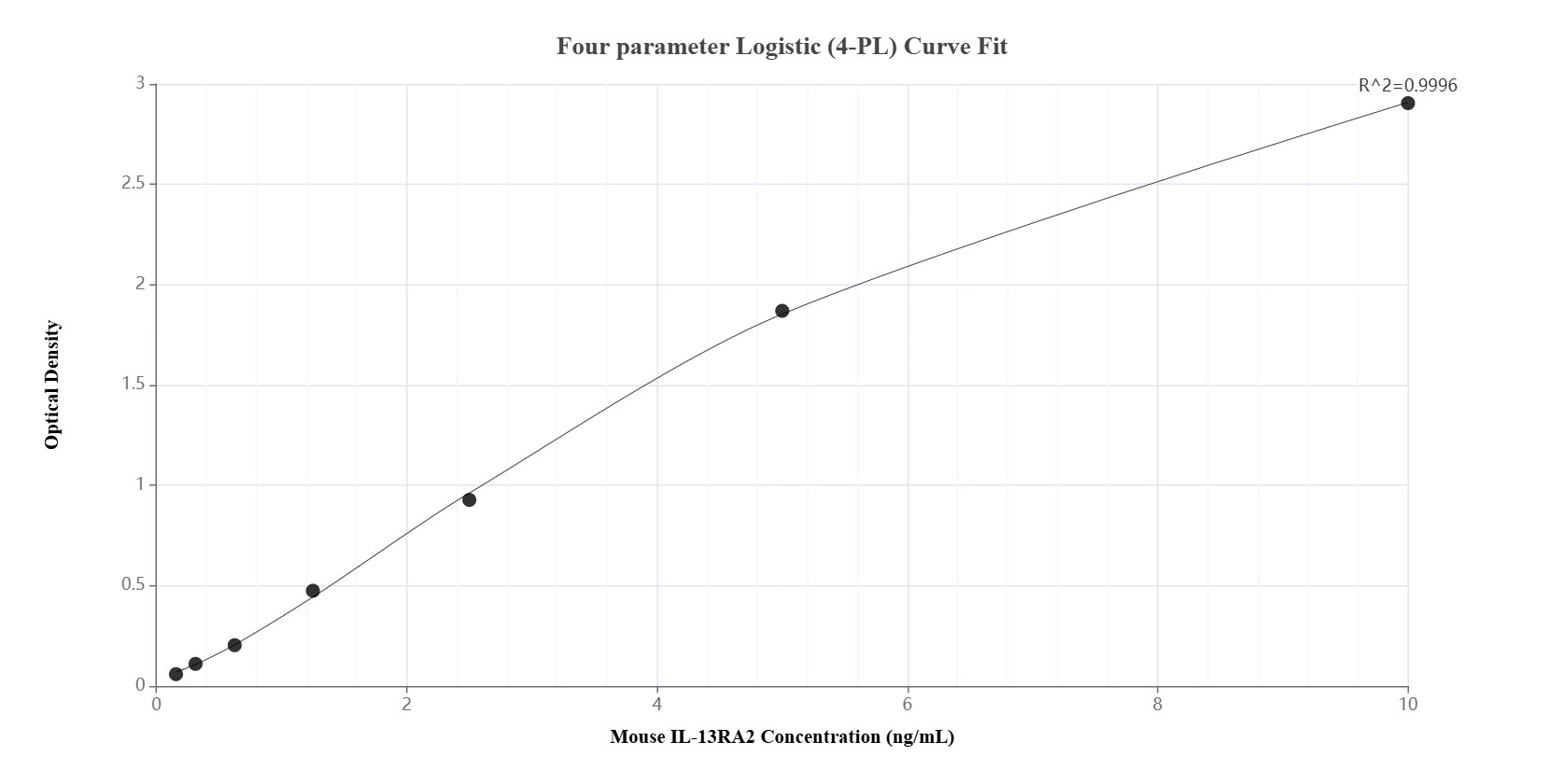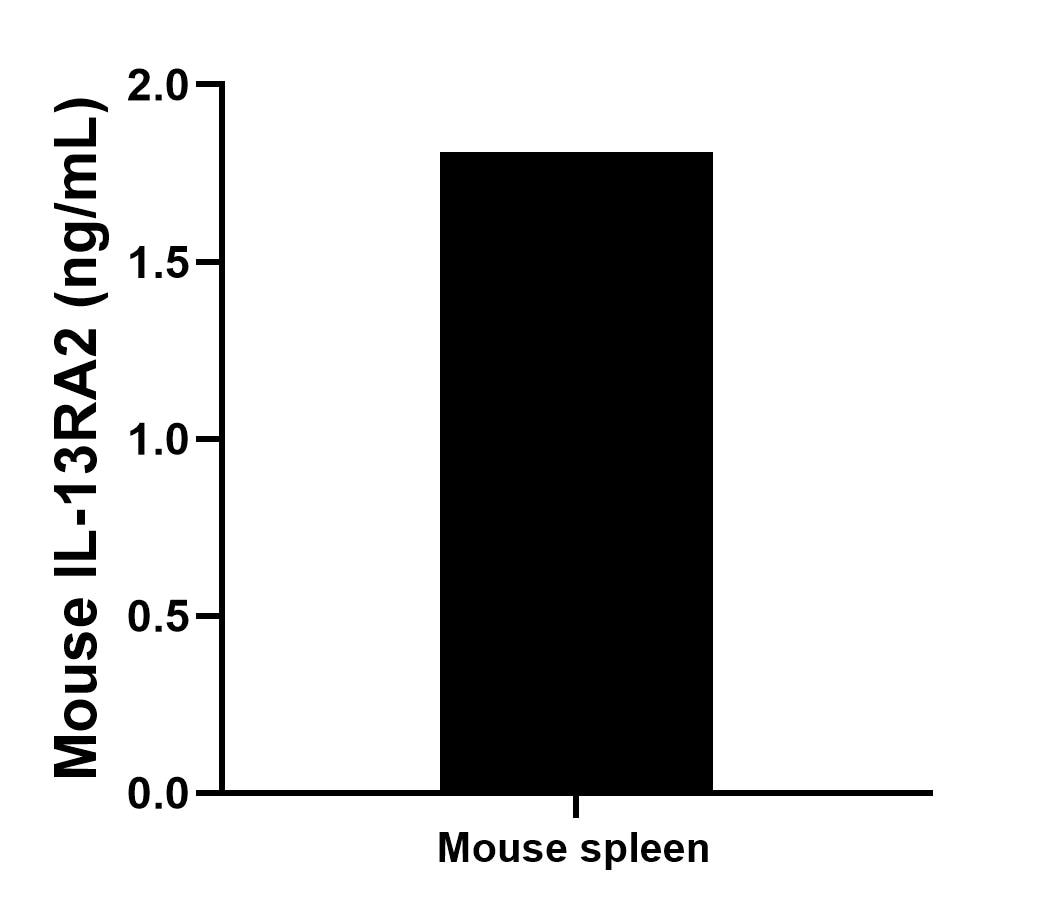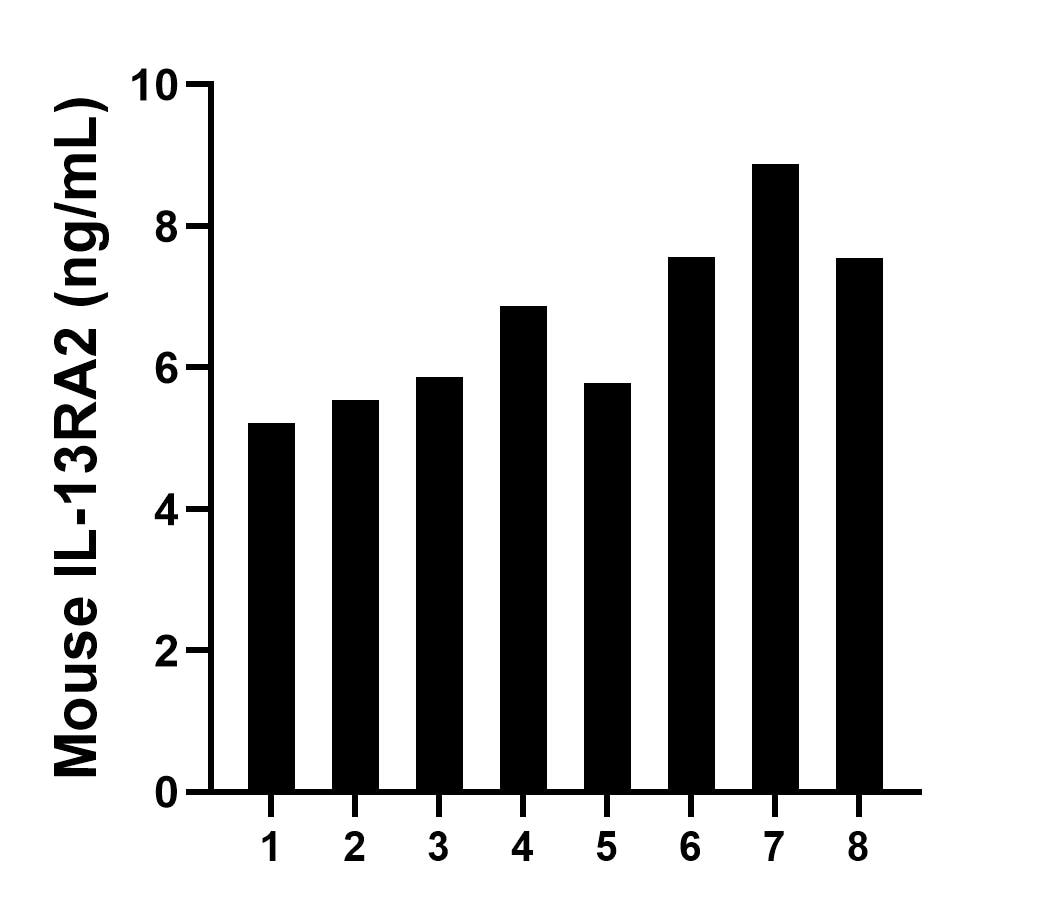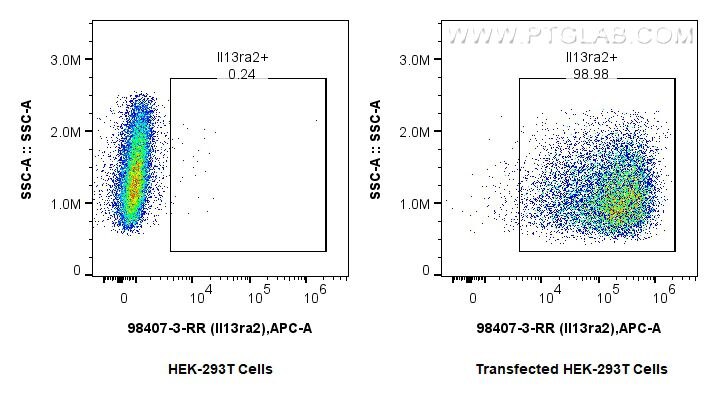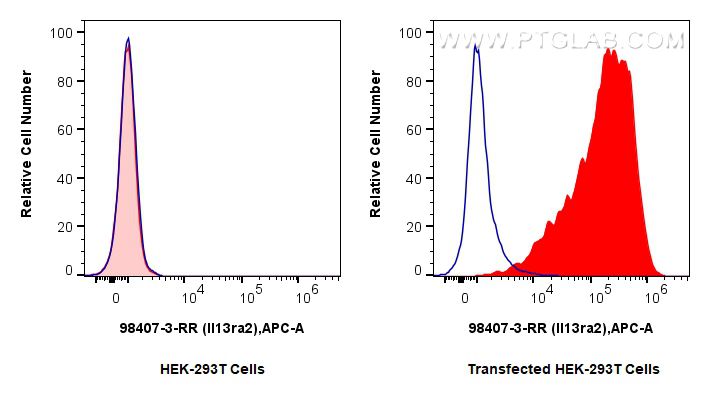Validation Data Gallery
Tested Applications
Recommended dilution
| Application | Dilution |
|---|---|
| This reagent has been tested for flow cytometric analysis. It is recommended that this reagent should be titrated in each testing system to obtain optimal results. | |
Product Information
98407-3-PBS targets IL-13RA2 in FC, Sandwich ELISA, Indirect ELISA, Sample test applications and shows reactivity with mouse samples.
| Tested Reactivity | mouse |
| Host / Isotype | Rabbit / IgG |
| Class | Recombinant |
| Type | Antibody |
| Immunogen | IL-13RA2 fusion protein Eg3118 相同性解析による交差性が予測される生物種 |
| Full Name | interleukin 13 receptor, alpha 2 |
| Calculated molecular weight | 44 kDa |
| GenBank accession number | NM_008356.4 |
| Gene Symbol | Il13ra2 |
| Gene ID (NCBI) | 16165 |
| Conjugate | Unconjugated |
| Form | Liquid |
| Purification Method | Protein A purification |
| UNIPROT ID | O88786-1 |
| Storage Buffer | PBS only{{ptg:BufferTemp}}7.3 |
| Storage Conditions | Store at -80°C. |
Background Information
IL-13RA2, also named as IL-13R and CD213a2, belongs to the type I cytokine receptor family. It binds as a monomer with high affinity to interleukin-13 (IL13), but not to interleukin-4 (IL4). IL-13RA2 lacks the cytoplasmic domain for signaling, indicating that it acts as a decoy receptor. IL-13RA2 gene polymorphisms have been associated with systemic sclerosis (PMID: 16981293). Overexpression of IL-13RA2 gene has been reported in several types of cancer, including melanoma, lung cancer, and brain tumor, which makes it a potential immunotherapeutic target (PMID: 19895199; 24970476; 24021875).
